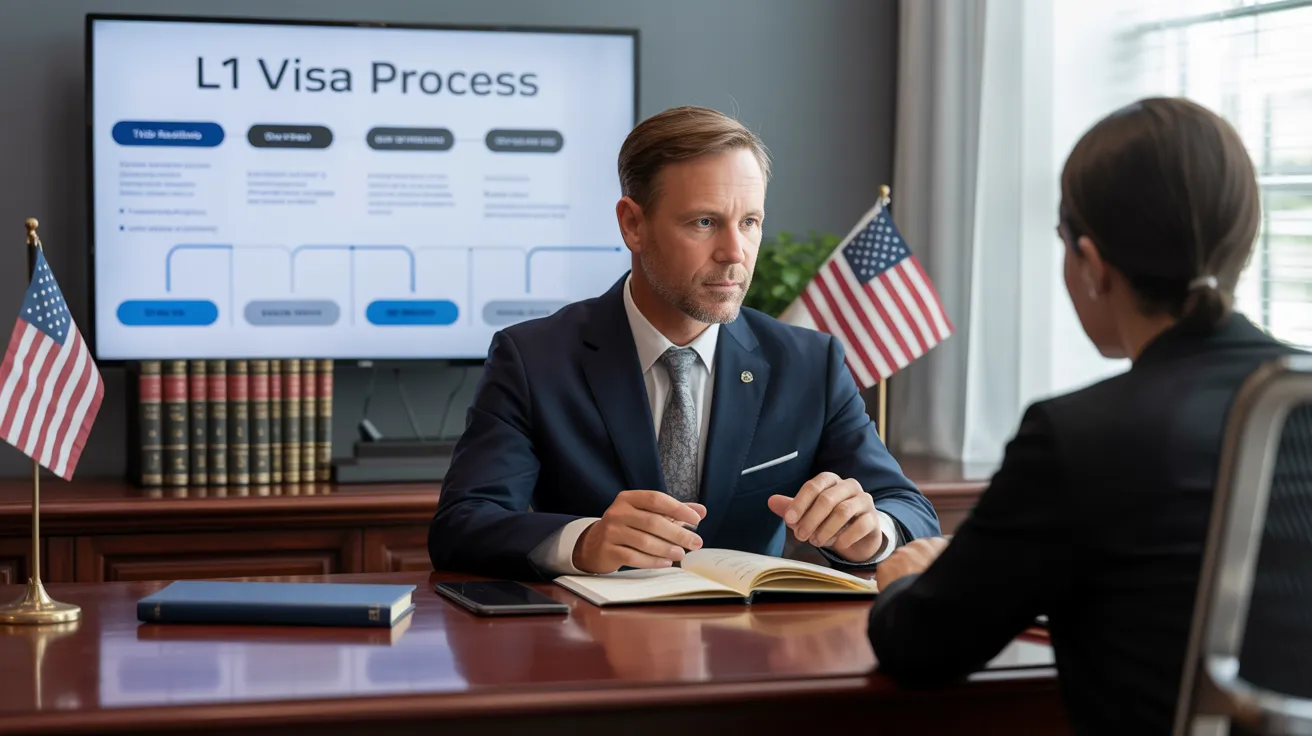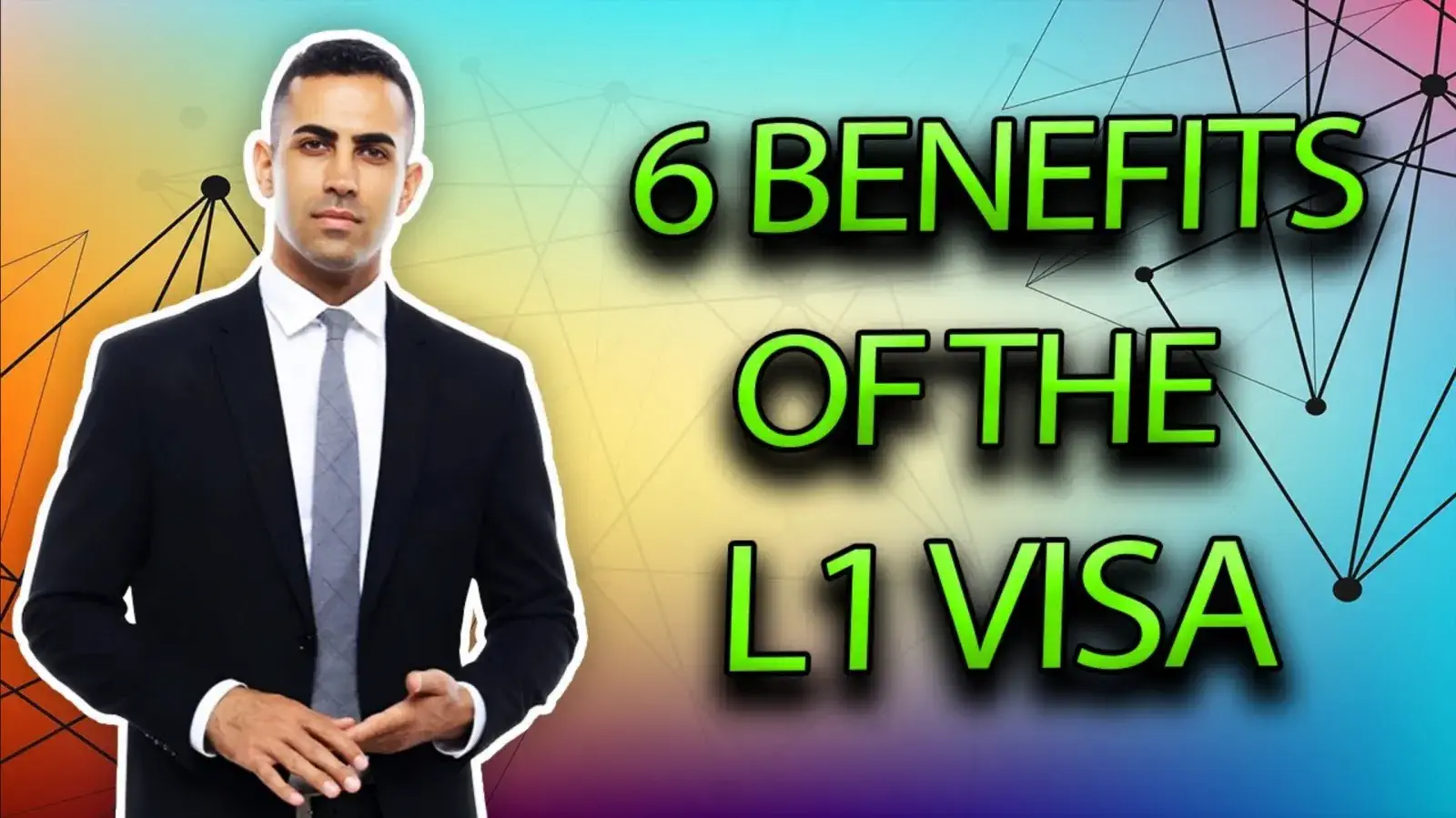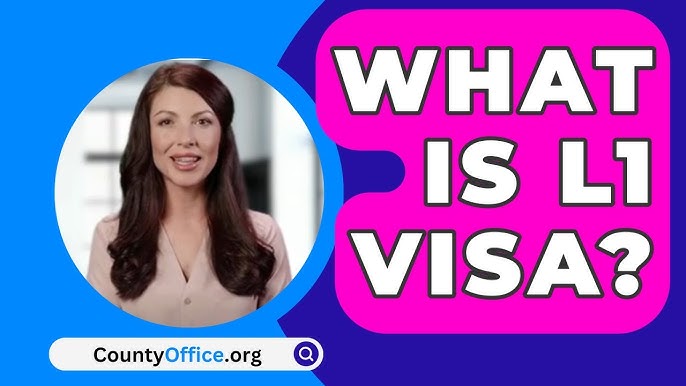Unlocking Opportunities: A Comprehensive Guide to the L1 Visa Process
The L1 visa procedure provides an essential path for multinational firms looking for to move crucial employees across boundaries. Comprehending the subtleties of eligibility requirements, the distinctions between L-1A and L-1B visas, and the ins and outs of the application procedure can considerably affect an applicant's success. However, navigating this complicated landscape is not without its obstacles, and mindful focus to documentation and employer sponsorship is necessary. As we discover the essential parts of this procedure, the strategies for getting over prospective barriers will become evident, exposing how notified preparation can open a world of opportunities.
Recognizing the L1 Visa
Understanding the L1 visa requires acknowledging its importance as an essential tool for international companies looking for to move proficient staff members between worldwide workplaces. This non-immigrant visa classification facilitates the movement of execs, supervisors, and specialized knowledge employees to the United States, thereby making it possible for companies to preserve operational continuity and harness worldwide skill efficiently. The L1 visa is divided into 2 primary categories: L-1A for managers and execs, and L-1B for employees having specialized knowledge.The L1 visa serves an important role in boosting a firm's competitive edge in the international industry - L1 Visa. By permitting companies to relocate their key employees, services can guarantee that vital tasks are taken care of by certified individuals who are already accustomed to the firm's society and functional procedures. This internal transfer system not only promotes understanding sharing however likewise promotes innovation and partnership throughout borders.Moreover, the L1 visa is often favored for its relatively uncomplicated application process compared to various other visa categories, as it permits dual intent, allowing owners to go after permanent residency while on a temporary job visa. This attribute makes the L1 visa particularly appealing for both employers and staff members, as it improves the pathway for proficient specialists to establish long-lasting residency in the United States
Qualification Requirements
Qualification for the L1 visa depends upon numerous key standards that ensure both the staff member and the employer meet details qualifications. This non-immigrant visa is developed for international business to move employees from consular services to united state counterparts.Firstly, the company needs to be a certifying company, that includes a parent company, branch, affiliate, or subsidiary of a united state organization. The company needs to have been doing organization for at the very least one year both in the united state and abroad. This assures that the business has enough operational security and a legit presence.Secondly, the staff member should hold a supervisory, exec, or specialized understanding placement. For L1A visas, the applicant should demonstrate supervisory or executive credentials, while L1B visas concentrate on specialized understanding pertaining to the company's items, services, or processes. Furthermore, the employee needs to have benefited the international entity for at the very least one continuous year within the last 3 years prior to their application.Lastly, the employee's duty in the U.S. should align with their previous setting, guaranteeing that their abilities and knowledge are leveraged for the firm's advantage.
Kinds Of L1 Visas
The L1 visa group makes up two primary kinds created to help with the transfer of employees within multinational firms: the L1A visa for managers and execs, and the L1B visa for staff members with specialized understanding. Each type offers unique functions and has specific eligibility criteria.The L1A visa is customized for people that hold supervisory or executive positions within a business. This visa enables high-level workers to move to an U.S. branch, subsidiary, or affiliate of the exact same organization. Candidates for the L1A visa must demonstrate that they have actually been utilized in a managerial or executive capability for at the very least one continuous year within the previous three years before their application. Additionally, this visa offers a much longer period of stay, originally given for 3 years, with the possibility of expansions for as much as seven years.In comparison, the L1B visa is planned for professionals with specialized knowledge associated to the company's items, services, or processes. To certify, candidates must verify that their knowledge is essential to the organization which they have benefited at the very least one constant year within the last 3 years in a duty that needed this specialized understanding. The L1B visa is at first granted for three years, with extensions offered for up to five years.Both visa kinds are crucial for firms looking for to boost their international procedures by leveraging knowledgeable employees, consequently advertising advancement and effectiveness within the U.S. market.
Application Process
Guiding with the L1 copyright procedure involves several vital steps that have to be carefully complied with to guarantee a successful result. The process starts with the united state company, who must initially establish qualification by showing a qualifying partnership with the international entity and validating that the staff member fulfills the particular requirements for the L1 visa classification being sought.Once eligibility is verified, the employer initiates the procedure by filing Form I-129, the Application for a Nonimmigrant Employee, with the U.S. Citizenship and Migration Services (USCIS) This type should be accompanied by a detailed description of the work duties to be performed, the business framework of both the united state and foreign entities, and the employee's credentials. It's important to verify that all information is exact and complete, as noninclusions or mistakes can lead to hold-ups or denials.Upon authorization of the I-129 application, the following action involves the employee requesting the L1 visa at a united state consular office or consular office in their home country. This phase requires the conclusion of Type DS-160, the Online Nonimmigrant copyright, and scheduling a meeting. Throughout the meeting, the applicant has to provide evidence sustaining their qualifications and the company's petition.After the visa is granted, the staff member can go into the United States to operate in the designated duty. On the whole, cautious preparation and adherence to every step of the application process are essential for a successful L1 visa result.
Required Documents

Important Kinds Required
Navigating the L1 Visa procedure requires mindful interest to the crucial types and documentation essential for an effective application. The primary type needed is the Kind I-129, Request for a Nonimmigrant Employee, which must be finished and submitted by the united state employer. This type outlines the information of the work offer and the qualifications of the worker seeking the L1 Visa.Alongside Type I-129, the candidate will require to total Kind I-539 if going along with relative are likewise using for visas. Furthermore, the company has to provide evidence of the certifying relationship between the united state entity and the foreign entity, commonly necessitating the submission of business documents such as write-ups of incorporation or financial statements.Moreover, it is important to include the L Classification Supplement to Type I-129, which specifies the kind of L Visa being requested-- either L-1A for managers and execs or L-1B for staff members with specialized knowledge. Candidates need to ensure that all forms are signed and dated appropriately, as insufficient entries can lead to delays or rejections. Effectively putting together these vital types lays the structure for a smoother L1 copyright procedure.

Sustaining Evidence Demands
Supporting documentation is important for a successful L1 copyright, as it corroborates the claims made in the petition. Candidates have to provide a series of files to show qualification for the visa, which is classified right into two main types: evidence of the certifying connection between the united state and foreign entities and evidence of the candidate's qualifications.To develop the partnership, candidates need to send documentation such as company organizational charts, economic declarations, and proof of possession. These records verify that the foreign business has a certifying relationship with the U.S. employer, whether as a parent firm, subsidiary, branch, or affiliate.For the applicant's certifications, crucial documents include a detailed work letter from the international employer, outlining the candidate's job title, tasks, and duration of employment. In addition, instructional qualifications, such as levels and diplomas, should be supplied to prove the candidate's experience in the pertinent field.
Company Sponsorship Papers

Usual Obstacles
Maneuvering the L1 visa procedure presents several common challenges that candidates need to understand. Trick issues often consist of rigid documents demands, possible delays in handling times, and the requirement for stringent legal conformity. Comprehending these challenges can assist candidates much better prepare and alleviate threats during their copyright trip.
Documents Demands
The L1 copyright procedure commonly offers substantial challenges associated with documentation needs. Candidates must offer extensive paperwork to establish eligibility, which can result in complication and prospective hold-ups. Trick records include evidence of a qualifying relationship between the U.S. and foreign company, evidence of the applicant's employment history, and comprehensive info regarding the task function in the U.S.One common challenge is gathering adequate proof to demonstrate the nature of the qualifying connection. Business often have a hard time to existing clear business graphes or financial statements that illustrate the link in between the entities. Furthermore, guaranteeing that letters of assistance from employers precisely mirror the candidate's work obligations and qualifications is essential, as vague descriptions can cause denials.Another concern emerges from the demand for in-depth job descriptions that straighten with the L1 visa categories. Applicants need to verbalize not only their current duty yet likewise their supervisory or customized knowledge obligations clearly. This demands a detailed understanding of both the applicant's setting and the regulative language used in L1 applications.
Handling Time Delays
Experiencing delays in handling times is a common challenge faced by L1 visa candidates, usually leading to irritation and uncertainty. Numerous variables contribute to these hold-ups, consisting of high application volumes, raised examination of applications, and administrative backlogs within the U.S. Citizenship and Migration Services (USCIS) Candidates may discover that processing times can differ substantially depending upon the service facility handling their application, as each center has its own work and performance degrees. Furthermore, the intricacy of the applicant's case, such as the demand for substantial paperwork or explanation, can better extend wait times.In some circumstances, concerns associated with the candidate's existing immigration condition or previous visa background might also result in added hold-ups, as USCIS might need further evaluation or details. It is important for prospects to remain positive throughout this period, keeping open interaction with their employers and lawful representatives to attend to any prospective concerns promptly.Understanding these processing time difficulties can aid L1 visa candidates plan for feasible hold-ups and minimize the influence on their change and occupation strategies. Perseverance and diligence are crucial virtues in navigating this elaborate procedure.
Legal Compliance Issues
Numerous L1 visa applicants come across legal conformity problems that can complicate their journey towards obtaining the visa. Recognizing and sticking to the specific policies established by the U.S. Citizenship and Immigration Services (USCIS) is important. Usual obstacles include demonstrating the certifying partnership between the foreign and united state employers, in addition to showing that the applicant has the requisite specific understanding or supervisory capacity.Additionally, candidates should supply detailed documents describing their task tasks, business structure, and monetary feasibility of the united state entity. Inadequate or imprecise documents can cause delays or even denials. Companies need to likewise ensure that they abide by labor regulations, consisting of wage and functioning condition requirements, which can influence visa eligibility.Another usual concern includes maintaining conformity with the terms of the visa once provided. Adjustments in employment status, job duties, or company structure can demand amendments to the visa, which otherwise attended to immediately can cause lawful problems. Consequently, remaining notified regarding conformity requirements and seeking legal guidance when needed is necessary to navigate the complexities of the L1 visa procedure effectively.
Tips for Success
Success in the L1 copyright process commonly depends upon thorough preparation and interest to information. To improve your possibilities of authorization, start by thoroughly recognizing the qualification demands for both the L1A and L1B visa categories. Assess whether your setting at the company qualifies as supervisory, exec, or specialized expertise, as this categorization significantly affects your application.Next, gather comprehensive documents that confirms your cases. This includes business charts, in-depth job summaries, and proof of the company's operational framework. Clear and succinct evidence of the certifying partnership in between the united state entity and the international entity is crucial. Verify that all records are arranged practically and presented in a professional manner, as this mirrors your dedication and seriousness regarding the application.Engage the services of a skilled migration attorney who concentrates on L1 visas. Their expertise can confirm indispensable, guiding you via complex guidelines and guaranteeing that all paperwork adheres to present laws. In addition, prepare for the meeting by exercising response to typical concerns and being all set to discuss your duty and contributions to the firm in deepness.
Often Asked Concerns
Can Household Members Go Along With the L1 Visa Owner?
Yes, household participants of L1 visa holders, consisting of partners and unmarried children under 21, can accompany the key visa owner. They may likewise get L2 visas, which allow them to reside in the United States.
How Much Time Can I Remain On an L1 Visa?
The L1 visa enables first keeps of approximately three years, with the opportunity of expansion. L1A visa holders may stay for a maximum of 7 years, while L1B visa owners can remain for five years.
Can L1 Visa Owners Look For a Permit?
Yes, L1 visa holders can look for a permit. L1 Visa. They might pursue permanent residency through employment-based categories, usually needing sponsorship from their company, supplied they satisfy the required certifications and documentation requirements
What Occurs if My L1 copyright Is Rejected?
If your L1 copyright is refuted, you may obtain a notice describing the reasons for rejection. You can look for to appeal the choice, reapply, or discover alternative visa options based upon your circumstances.
Are There Any Kind Of Travel Restrictions With an L1 Visa?
An L1 visa usually permits international traveling; nevertheless, re-entry to the U. L1 Visa.S. rests upon keeping valid status. Travelers must assure compliance with visa conditions to stay clear of problems upon return
Verdict
